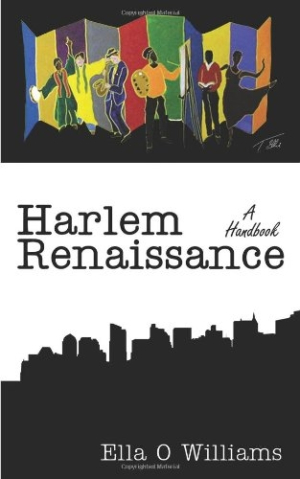Harlem Renaissance
A Handbook
Chronologically detailed artistic developments of the Harlem Renaissance are placed in context.
From Ella O. Williams, retired professor of African-American literature, comes a work designed to introduce students and curious readers to the Harlem Renaissance. A quick read that introduces key figures via brief biographies, Harlem Renaissance: A Handbook is a tidy resource for those curious about an active period in African-American history.
Williams’s first and second chapters are essentially a time line of the renaissance, fleshed out in swift and context-building prose. The author introduces the movement as one that enabled black Americans to move away from dehumanizing presentations of themselves in culture. The “New Negro” of the twenties, she says, was both self-directed and intentionally formed, if still moored in white imaginations as exotic.
Williams recalls the Harlem of the teens and twenties as the site of a rising black middle class, though still held separate from white New York. She traces Harlem’s cultural rebirth, from conceptualization in the minds of intellectuals like W. E. B. DuBois, to fruition via the works of Langston Hughes, Zora Neale Hurston, and Jean Toomer.
The poems, novels, plays, and publications of the era are contextually placed among the social movements that inspired them, or that they sometimes inspired. Black soldiers coming home from war to a still-segregated country are given a reception amid Marcus Garvey’s ideals; the music of racial discord is juxtaposed with that of Bessie Smith and non-Harlem residents like Billie Holiday at the Apollo.
Such pages move quickly and chronologically, and each development is made to work as part of the whole movement. Absent are defined transitions, imparting the feeling of a swiftly moving cultural period. Tensions are maintained and disappointments addressed, from failed newspapers to disappointing book sales. Yet, whatever limitations the Harlem Renaissance may have had, it is presented here as a true “awakening of race-consciousness,” which gave “Negroes a true reflection of themselves and their culture.”
The rest of the work is best approached purely as a reference. It offers up short biographies of key figures, mostly from the Harlem Renaissance’s literary branches. Some details are repeated from the second chapter. Figures instrumental to the movement, both familiar and lesser-known, are named herein. Alphabetizing makes for easy navigation.
These biographies focus primarily on contributions related to Harlem, and evade lesser controversies not related to communal pride. They can be usefully turned to for succinct rundowns of Harlem-specific cultural contributions, and they sometimes extend to work beyond the Harlem Renaissance. A follow-up chapter is comprised of even shorter biographies of secondary/non-literary figures, and a bullet-point-style time line revisits moments not detailed in the earlier chapter.
A concise introduction to a bustling period in the cultural lives of African Americans, Williams’s handbook should prove a useful touchstone for quick historical engagement.
Reviewed by
Michelle Anne Schingler
Disclosure: This article is not an endorsement, but a review. The publisher of this book provided free copies of the book and paid a small fee to have their book reviewed by a professional reviewer. Foreword Reviews and Clarion Reviews make no guarantee that the publisher will receive a positive review. Foreword Magazine, Inc. is disclosing this in accordance with the Federal Trade Commission’s 16 CFR, Part 255.

